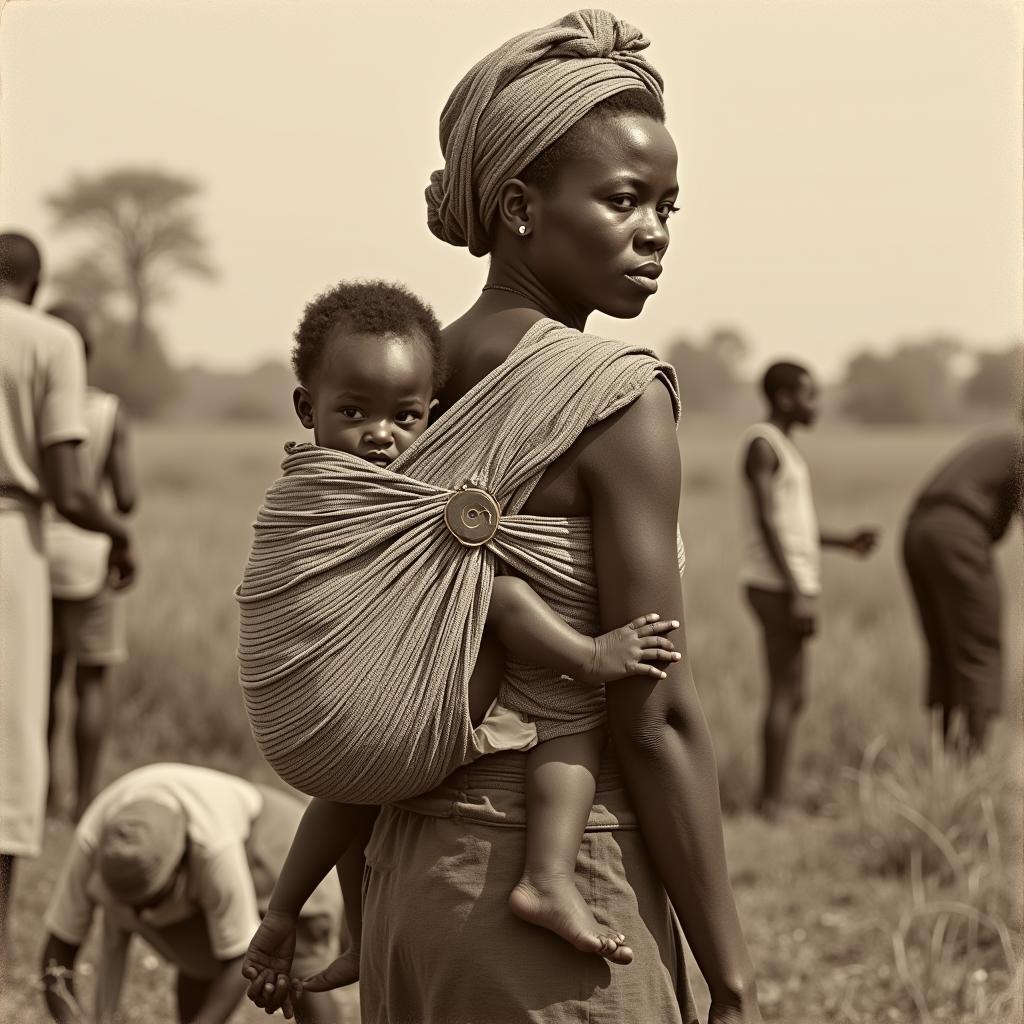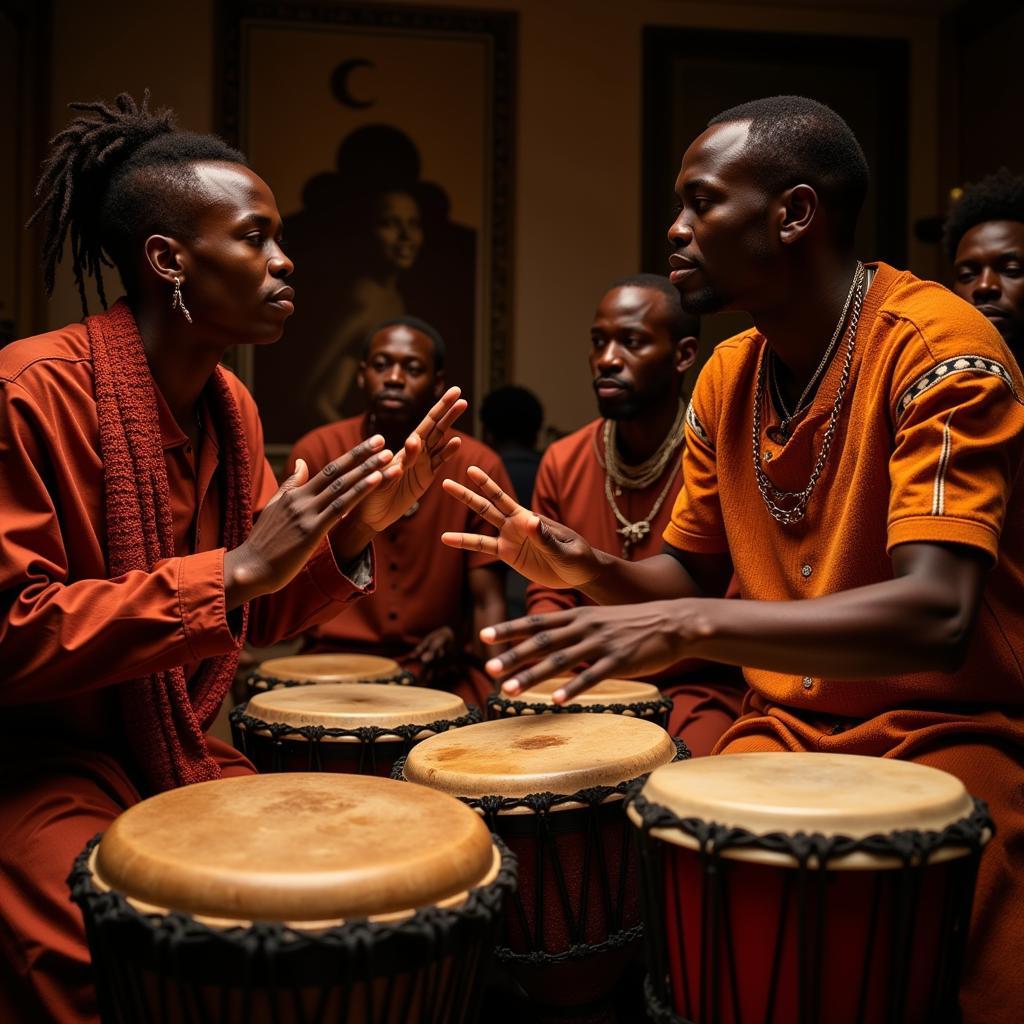A Journey Through Time: Exploring African Art History
African Art History is a rich and complex tapestry woven over millennia. It encompasses a diverse range of artistic traditions, styles, and materials, reflecting the continent’s vast cultural landscape. From ancient rock art to contemporary masterpieces, African art offers a unique perspective on human creativity and expression. This article delves into the captivating world of African art history, exploring its key movements, influences, and enduring legacy.
Unmasking the Myths: Understanding African Art
Western perceptions of African art have often been clouded by misconceptions and stereotypes. For centuries, African art was relegated to the realm of “primitive art,” ignoring its sophistication and historical context. However, a deeper understanding reveals the intricate symbolism, masterful craftsmanship, and profound cultural significance embedded within each piece.
From Ancient Roots to Global Influence: Tracing the Timeline
African art history spans thousands of years, with distinct periods marked by unique artistic developments:
Prehistoric Art: Echoes of the Past
The earliest evidence of artistic expression in Africa dates back to the Middle Stone Age, with the discovery of ochre crayons and engraved ostrich eggshells. Rock art, found across the continent, provides invaluable insights into the beliefs and practices of prehistoric African societies. The iconic Tassili n’Ajjer rock art in Algeria, for example, showcases a remarkable visual record of Saharan life over thousands of years.
Ancient Egypt: A Legacy of Grandeur
Ancient Egyptian art, with its monumental architecture, intricate hieroglyphics, and stunning sculptures, has captivated the world for centuries. The pyramids of Giza, the Sphinx, and the treasures of Tutankhamun’s tomb are just a few examples of the extraordinary artistic achievements of this civilization. Egyptian art played a significant role in shaping artistic traditions throughout Africa and beyond.
Nok Culture: Unveiling West Africa’s Artistic Heritage
The Nok culture, which flourished in present-day Nigeria from around 1000 BCE to 500 CE, is renowned for its terracotta sculptures. These sculptures, often depicting human figures and animals, display a remarkable naturalism and attention to detail. The Nok culture is considered a foundational influence on subsequent West African art traditions.
The Benin Bronzes: Symbols of Power and Prestige
The Benin Bronzes, a collection of brass plaques and sculptures from the Kingdom of Benin (present-day Nigeria), are among the most celebrated examples of African art. Created from the 13th century onwards, these intricately detailed works depict courtly life, religious rituals, and historical events, offering a glimpse into the power and sophistication of this once-mighty kingdom.
African Masks: Ritual and Transformation
Masks hold a central place in many African cultures, serving both ceremonial and spiritual purposes. From the elaborate headdresses of the Yoruba people in Nigeria to the vibrant masks of the Makonde people in Tanzania and Mozambique, African masks embody a wide range of artistic styles and cultural beliefs. These masks are often used in rituals, dances, and ceremonies, serving as conduits between the human and spirit worlds.
The Enduring Legacy of African Art
African art continues to inspire and influence artists and art lovers worldwide. Its bold aesthetics, powerful symbolism, and diverse forms have left an indelible mark on modern and contemporary art movements. From Picasso’s Cubism to the vibrant textiles of contemporary African fashion designers, the influence of African art can be seen in countless artistic expressions.
Exploring the Diversity of African Art History
This journey through African art history is just a glimpse into a vast and multifaceted subject. Each region of Africa boasts its own unique artistic traditions, materials, and techniques, offering endless opportunities for discovery and appreciation.
To further your exploration of African art history, consider these resources:
- African art history graduate programs: For those seeking in-depth study and research opportunities.
- African arts and crafts history: To delve into the history of traditional crafts and their cultural significance.
- African artifacts information: To gain a deeper understanding of specific artifacts and their historical context.
As you delve deeper into the world of African art history, remember that it is a living, breathing tradition, constantly evolving and inspiring new generations of artists and art enthusiasts.



